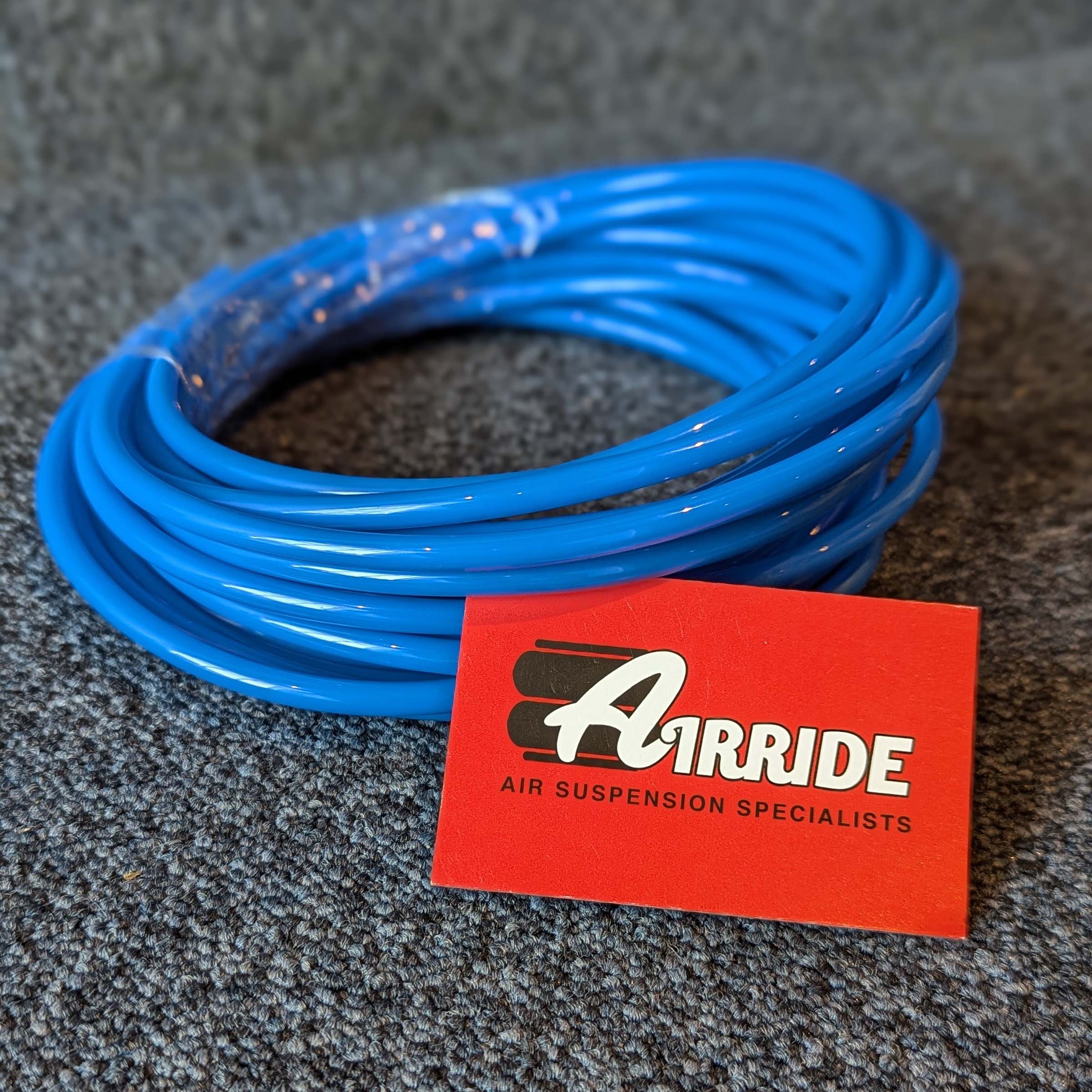Measuring Airline: A Brief Guide
When it comes to air suspension systems, airline (also called hose, pipe, or tube) plays a critical role. Its primary purpose is to transfer air from where it is generated (the compressor or tank) to the air bags, and then back to the atmosphere when adjustments are made.
Why Not Use Metal Lines?
While metal or braided airlines do exist, their use is typically limited to specific situations, such as:
- High-Temperature Lines: Near the compressor, where heat is a concern.
- Struts with Moving Parts: For example, Air Lift front struts still use braided lines.
- Show Builds: For cosmetic purposes, where the lines are visible, such as in a boot-mounted display.
Metal lines, however, are not used for the entire air suspension system in modified vehicles, vans, motorhomes, or OEM air suspensions. Here’s why:
- Cost: Metal lines are more expensive to buy and install.
- Practicality: They lack flexibility and can be harder to seal effectively.
- Durability: Plastic lines are just as reliable and, in many cases, more so.
Nylon vs. Polyurethane Airlines
At AirRide, we exclusively use nylon airlines for our systems. Here’s why:
- Durability: Nylon is tough and resistant to wear. It can kink during installation if not handled carefully, but once installed correctly, it offers exceptional longevity.
- Strength: Modern air bags often have end caps made of nylon, meaning this material can support the entire weight of your vehicle!
- Polyurethane: While softer and more flexible, it is more prone to damage and less durable over time.
Airline Sizes: What You Need to Know
Airline size varies between OEM and aftermarket air suspension systems:
- OEM Systems: Common sizes include 4mm, 5mm, and 6mm, sometimes used in combination (e.g., 4mm for one section and 6mm for another). These sizes are not always printed on the airline but can sometimes be found, so it’s worth checking if you need a replacement.
- Aftermarket Systems: The global aftermarket air suspension market, particularly dominated by US suppliers, tends to use imperial measurements:
- Common Sizes: 1/4" and 3/8" are the most widely used.
- Other Sizes: 1/8" and 1/2" may also appear in some setups.
- Metric Sizes: 6mm and 8mm are sometimes used by smaller European suppliers.
Larger sizes are rarely used for standard road cars, as they pose risks such as excessively fast vehicle adjustments, which can be hazardous to both people and the vehicle's integrity. However, for show or demonstration vehicles, larger airlines are sometimes used intentionally to create faster vehicle movements, adding drama and visual impact to impress audiences. These setups prioritize attention-grabbing performance over practicality and are typically avoided in daily-driven vehicles.
Identifying Airline Sizes
Here’s how to identify the size of your airline:
- Check for Markings: Many airlines have the size printed on the tubing or the push-fit connector collar.
- Use a Vernier Caliper: When markings aren’t present, a digital or analogue caliper is the best way to measure accurately.
- Avoid Guessing: Metric and imperial sizes can be very close, so visual estimation or a ruler won’t be precise enough.
Choosing the Right Airline
At AirRide, all the airline we use is rated to handle over 200 psi, matching the high specifications of our premium air suspension systems. Whether you’re working with a new installation or a replacement, we can help you select the right airline for your needs.
Get in Touch
Need more information? Our team is here to help!
- Call us: 0800 772 0315
- Email us: ENQUIRIES@AIRRIDE.UK



